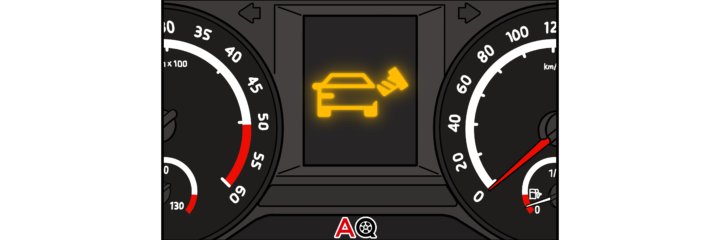These days when the price of gas is going up, you probably don’t want to deal with a situation that affects your car’s fuel economy. So, we understand your concern about the fuel cap warning light peeping at you from your vehicle’s dashboard.
We will talk about what the fuel cap warning light is all about and what you can do about it. Even if you haven’t experienced this issue- lucky you- it doesn’t hurt to be prepared just in case it occurs any time in your driving future. Alright, here we go.
What Is Your Car’s Fuel Cap?
As the name suggests, a fuel cap “caps” the end of the pipe leading to your vehicle’s gas tank. The fuel cap is also commonly referred to as a gas cap or fuel filler cap, and most vehicles, including cars, SUVs, and trucks, come with them.
Fuel caps may seem like one of the least important parts of a vehicle, but they serve very important purposes, such as preventing dust, debris, and dirt from entering the gas tank. It also acts as a seal against evaporation. More so, the fuel cap supports a vehicle’s evaporative emission system by helping to capture fuel vapors for reuse that would’ve otherwise escaped from the gas tank without the fuel cap in place.
So, What Is the Fuel Cap Warning Light?
Unfortunately, fuel caps are prone to wear and tear since they are frequently removed and replaced when gassing up the vehicle. The driver will be notified by the vehicle’s computer when a fuel cap is bad or falling. That notification is the warning light you see on your vehicle’s dashboard.
Typically, your vehicle’s computer interprets a leak as a malfunction and can be due to a loose or defective fuel cap. The first thing you should do if the fuel cap warning light comes on while you’re driving is pull over in a safe spot, remove the fuel cap, and replace it more securely. Also, inspect the fuel cap for defects or damages. If the warning light persists, you might need to replace the fuel cap altogether.
Why Should You Care About the Fuel Cap Warning Light?
As I said earlier, your vehicle’s fuel cap play important roles in protecting the gas tank from dirt, debris, and dust. In other words, the fuel cap helps protect the gas tank and its content from contamination. We know the word “contamination” already sounds bad, but how it affects your vehicle’s gas tank can spill over to the engine, ultimately causing you worse problems to deal with than poor fuel economy.
If, for example, dirt or debris makes its way into your vehicle’s fuel tank, it could clog the fuel filter, fuel lines, fuel injector, or even the fuel pump. Now, that’s not good for the vehicle’s engine.
What Can Trigger the Fuel Cap Warning Light?
By now, you already have a pretty good sense of what the fuel cap warning light is all about and why it may have popped up on your vehicle’s dashboard. Now, let’s talk a little bit more about possible triggers of the fuel cap warning light.
As you already know, the fuel cap contributes to a vehicle’s evaporative emission system by helping to capture and reuse fuel vapors that would’ve otherwise escaped from the gas tank without the fuel cap in place. You know that fuel moves from the tank to the engine where it is ignited by the spark plugs.
But besides the fuel, evaporated gas is also collected in a separate tank called a “charcoal canister” from where it is eventually moved to mix with the rest of the fuel in the engine. This is an important process that improves a vehicle’s fuel economy, and it all starts with the fuel cap acting as a reliable seal to trap the gas vapors.
So, should the fuel cap fail to adequately prevent evaporation, the vehicle’s computer identifies this as a leak, triggering the fuel cap warning light on the dashboard. Bear in mind that the computer may also be tricked to trigger the fuel cap warning light due to a leak elsewhere in the system. So, if you are sure the fuel cap is not damaged, the O-ring rubber is in place, and the fuel cap is properly placed and tightened and the warning light is still on, you should get a qualified automobile technician to investigate a possible leak elsewhere.


